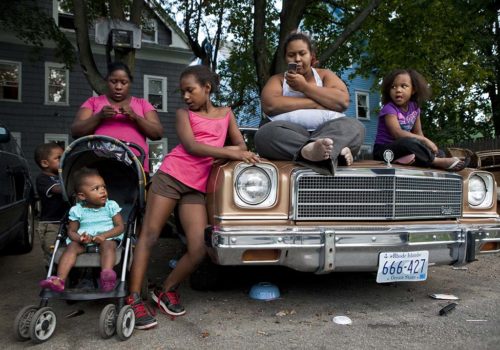Jennifer’s family is the story of an encounter. Jennifer and Louisa are roughly the same age, but everything else sets them apart, from the way they look to their social context. A student with golden, gleaming hair, Louisa decided to investigate the social problems of a working-class neighborhood in Providence, Rhode Island, where the crime and unemployment rates are equal. Louisa isolated herself from the bustle of the streets, taking as her subject the din of an apartment in the Southern part of the city, where Jennifer lives with her partner and their four children.
The book tells the story of their life through several intertwined voices. The unstructured and rough images respond to the accompanying texts, wherein each family member reveals his or her story. The accent, the slang, the incisive tone and heated rhythm are all transcribed there. In the permanent disorder of this deluge of movement, this outpouring of feelings, there is neither reservation nor judgment. The subtle compilation takes into account their complex reality which might be hard to see through the explosions of joy that punctuate the work. The toys scattered across the floor correspond to the oversized stuffed animal Jennifer holds in her arms, stubborn and fragile, right before the text tells the story of her childhood stolen by her abusive stepfather. To the ever-present bottle of alcohol correspond the smile of her mother who, we learn, lost her son when he was nine years old, a tragedy from which she has never recovered.
Through the text and images unfolds the life of an entire social class, without ever leaving the apartment. This interwoven story confirms the documentary value of a new narrative style combining several voices at once.
Laurence Cornet
“Jennifer’s Family”
Photographs by Louisa Marie Summer
Texts by Mairéad Byrne
Schilt Publishing
25 euros
















